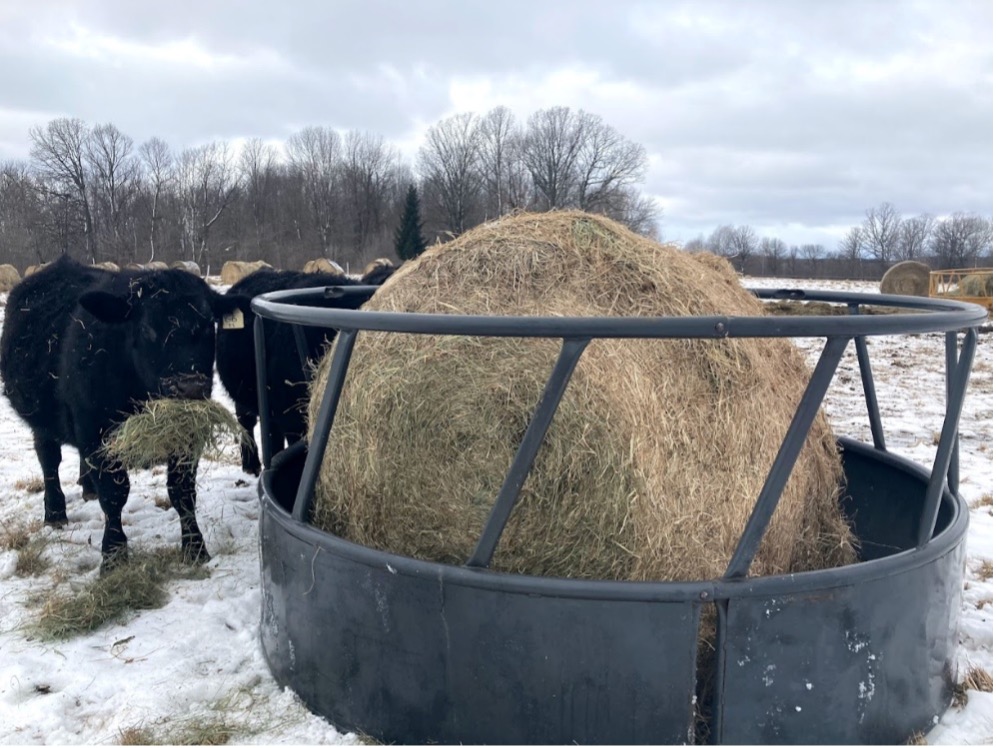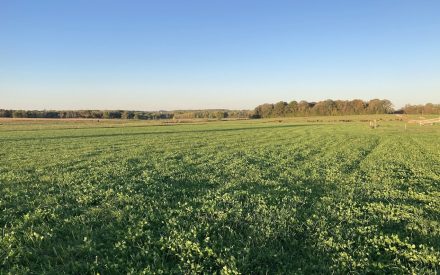Many grazing operations across Wisconsin may look similar during the growing season, but what differentiates them is winter. Graziers employ a variety of winter feeding strategies. For those who choose to keep their livestock outdoors year-round, bale grazing is a common approach. In bale grazing, bales are placed on pasture, often pre-set in a grid pattern prior to winter. A temporary electric fence wire is used to limit access to only a few bales at a time, which are often (not always) fed using bale rings. The bales are kept stationary while livestock are progressively moved through the grid by moving the wire and bale ring throughout the winter. This strategy of feeding hay is an effective way to outwinter several breeds of livestock – predominantly cattle – while also distributing nutrients, building soil fertility, and reducing the costs of inputs and labor.
Is bale grazing worth it?
Because bale grazing involves keeping livestock outdoors through winter, the practice carries tremendous responsibility for the farmer. Careful management is required to sustain livestock wellbeing and performance through tough weather conditions. Despite the potential for challenges, successful bale grazing carries a few key benefits that make the practice worth considering:
- Low-cost option for raising livestock with little infrastructure or capital investment
- Minimizing wear and tear on facilities and equipment during the winter months
- Improving soil fertility without the costs of applying fertilizer or manure
Considerations for successful bale grazing
Every farm is unique and must determine whether bale grazing is a good fit or not. The practice requires a different level of attention and work that may not fit the goals and interests of some operations. While it is a practice that may look different from farm to farm, there are a few key considerations that apply to every bale grazing operation:
- Cattle are cold tolerant, but protection from adverse weather is occasionally needed
- Shelter is effective, but constructed structures are not always necessary
- Forest edges or the bales themselves can serve as protection from weather
- Outwintering sites should be located in areas with the greatest soil fertility needs
- Sensitive areas such as low spots or concentrated flow channels must be avoided
- A reliable winter water source, located in a well-drained area is a prerequisite
- Grid density (bales/acre) of pre-set bales should be determined by soil fertility needs
Bale grazing has become a proven winter feeding and soil fertility-building strategy for several livestock producers across Wisconsin. Yet, the practice has great potential to become more widely-adopted across the state.




 Grazing to Protect Surface Water: Considering critical and sensitive areas
Grazing to Protect Surface Water: Considering critical and sensitive areas Research Brief: Interseeding legumes into grass pastures
Research Brief: Interseeding legumes into grass pastures Research Brief: 2024 Wisconsin bale grazing project
Research Brief: 2024 Wisconsin bale grazing project What should I plant in my pasture?
What should I plant in my pasture?


